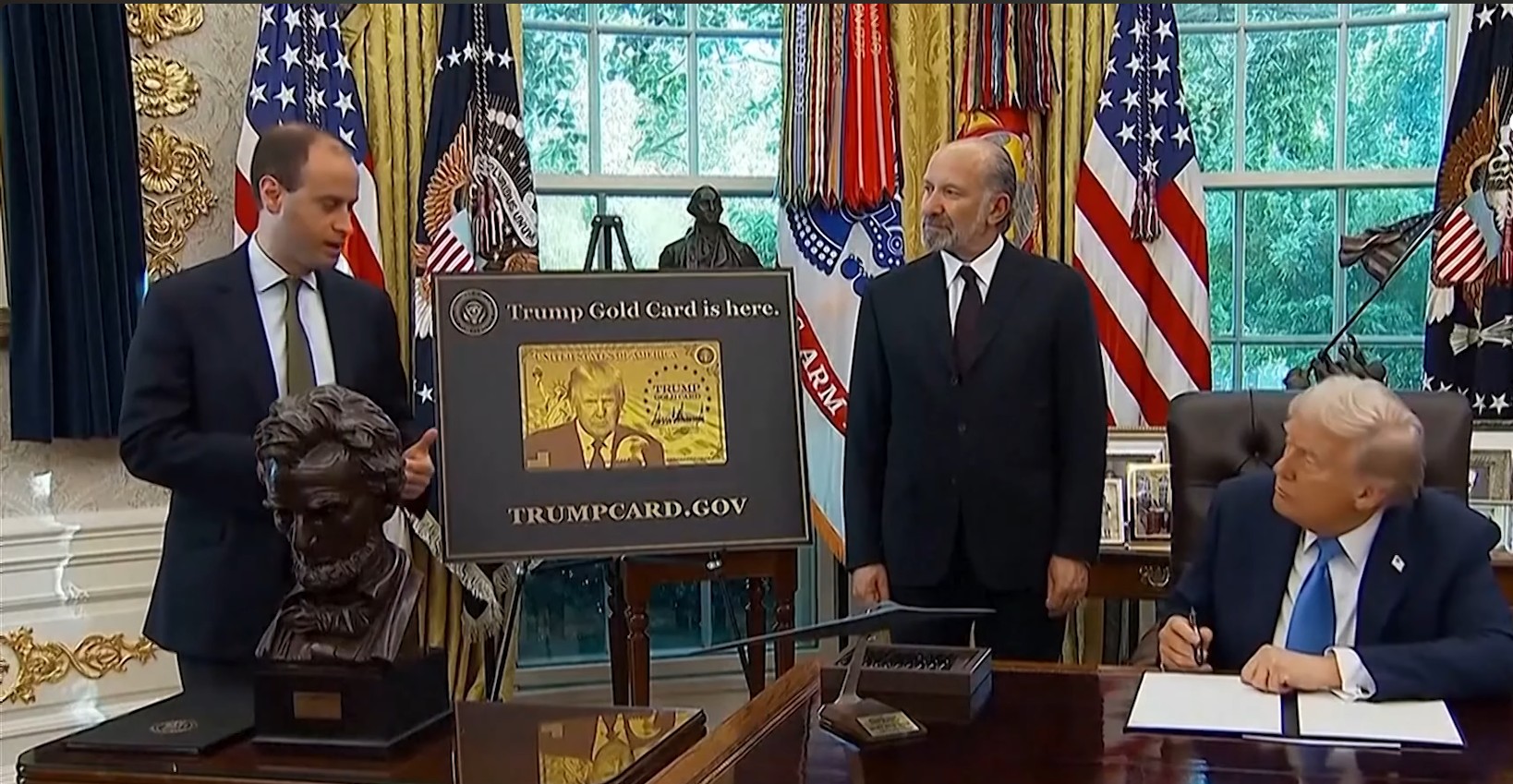AIIA successfully won its lawsuit against USCIS’s April 2024 EB-5 fee increases, with a federal judge ruling that the agency unlawfully raised fees without conducting the required fee study and acted arbitrarily under the APA; the old, lower fees are now back in effect while litigation continues, and AIIA is exploring a potential class action to seek refunds for investors and regional centers who paid the higher fees.

The American Immigrant Investor Alliance (AIIA) has frequently filed lawsuits on behalf of EB-5 investors to hold the U.S. Government to account. Our organization provides comprehensive support, vigilance, advocacy, action, and litigation on behalf of all EB-5 investors to secure their interests. In the past, our efforts have been successful in negotiating settlements with U.S. Citizenship and Immigration Services (USCIS) to protect and benefit investors.
AIIA has succeeded again. On November 12, 2025, we won a lawsuit against USCIS in the U.S. District Court for the District of Colorado concerning increases to EB-5 petitioning fees that were promulgated by USCIS on April 1, 2024.
The regulation in question raised the filing fee for I-526/I-526E petitions from $3,675 to $11,160, an increase of 204 percent. Additionally, it raised the filing fee for I-829 petitions from $3,750 to $9,525, an increase of 154 percent. Furthermore, for EB-5 regional centers, it raised the fee for I-956 and I-956F applications from $17,795 to $47,695, an increase of 168 percent. Apart from these fees, USCIS also levied a mandatory “Asylum Program Fee” of $300 or $600 on some petitioners.
Needless to say, these fee increases were arbitrary and felt abusive . As AIIA has repeatedly demonstrated, many EB-5 investors are not ultra high net worth. Many of them liquidate their life’s savings in order to make EB-5 investments to immigrate to the United States. In addition to the statutory requirements of investments of $800,000 to $1,050,000, EB-5 investors also have to pay legal fees to attorneys, administrative fees to regional centers, currency swap costs, and other fees associated with starting a new life as a U.S. resident. Therefore, the dramatic increase in EB-5 filing fees, by over 100 percent in each category, severely affected EB-5 investors.
The Judge’s Ruling
In a November 11, 2025 decision, U.S. District Judge Charlotte Noelle Sweeney, ruled that USCIS had unlawfully increased the filing fees for EB-5 petitions and applications. Her order partly stayed (i.e., blocked) the fee increases, based on arguments on the merits.
Judge Sweeney ruled that USCIS had violated Section 106 of the EB-5 Reform and Integrity Act of 2022, which requires USCIS to conduct and publish a “fee study” on EB-5 fees before changing those fees. She also found the agency actions to be “arbitrary, capricious, and not in accordance with law,” pursuant to the Administrative Procedure Act (APA), as AIIA had pleaded.
AIIA’s Contribution to Victory
In her order, Judge Sweeney recognized AIIA’s unique participation in the civil action.
The doctrine of “legal standing” is a significant burden for plaintiffs litigating in the United States of America. Any plaintiff who is seeking relief based on a claim must have “standing” to sue — i.e., they must have suffered an “injury in fact” that is “concrete, particularized, and actual or imminent,” with a causal connection between the injury and the civil action, for which any relief granted is capable of redressing the injury. See, e.g., Lujan v. Defenders of Wildlife, 504 U.S. 555 (1992). A general grievance against the government is insufficient to create standing. Many lawsuits in the United States often fail on the grounds of standing, which is embodied in Article III of the U.S. Constitution that vests the judiciary with authority to hear cases and controversies.
AIIA’s legal standing to sue was attacked by the Defendants in the case, who argued that we did not suffer an “injury in fact,” as AIIA is not an EB-5 investor paying the new fees. AIIA, however, is a nonprofit organization that lobbies and advocates for the interest of EB-5 investors, many of whom were directly injured by the fee increases. One of AIIA’s members, an EB-5 investor, was required to pay the increased fees to process his I-829 Petition to Remove Conditions on Permanent Residence in June 2024. The court held that AIIA’s representation of that investor’s interests – as an entity whose advocacy was germane to his injury – was permissible, and created standing. The decision states:
“[T]he record is clear that the interests the Alliance seeks to protect—those of EB-5 investors and visa applicants—are germane to its purpose—advocating on behalf of and educating EB-5 investors worldwide.” Moody, et. al. v. Noem, No. 24-cv-00762-CNS (D.Colo, Nov. 13, 2025), ECF No. 41, at 17-18 (order granting application for a stay pending judgment).
When the Defendants had challenged AIIA’s participation in the suit on the grounds of standing, we filed a reply brief in opposition to those claims. We wrote, in our brief, the following language, which was explicitly quoted by Judge Sweeney in her order:“To say members of [AIIA][,] … suffer no injury from the failure of USCIS to complete the fee study and double fees untethered to efficient processing, is preposterous.”
The complete order can be downloaded from here.
What Happens Today (November 14, 2025)
Department of Justice (DOJ) attorneys have conferred with our legal counsel and have confirmed that the old fees (before April 1st, 2024) are now in effect. The agency will post a public notice about the order on their web page and correct the fee schedules that appear there. We will update this post with a link to that public notice when it becomes available.
The DOJ attorney has confirmed that EB-5 investors filing Form I-526/E or I-829 today may submit payment using the previously applicable, lower filing fees which was reinstated by the Court’s decision. The same applies for regional center I-956/F/G petitions.
We have also been notified that the agency is slowing down the automated processing of EB-5 petitions and switching to manual processing to ensure that their systems software does not inappropriately reject petitions for including the “wrong fee”.
Next Steps
The court’s ruling in this case does not end the litigation. The judge’s order merely enters a “stay” of the rule pending judgment, meaning that it may not be enforced until a final resolution of the case. However, the decision — ruling on the merits of the case — clearly indicates that AIIA has won the case to this point.
Plaintiffs are already conferring with the Defendants, i.e., the U.S. Department of Homeland Security, on the case and will file a “Joint Status Report” with the court on or before January 12, 2026. The report will detail the parties’ positions and will indicate how the case may be resolved following the merits decision.
Ever since we announced the win, we have been inundated by requests from investors and industry members alike requesting if we can help assist those who filed EB-5 petitions after April 1st to receive refunds on the higher fees that were paid. AIIA is now exploring the possibility of a class action lawsuit seeking financial restitution on behalf of EB-5 Investors and regional center operators who have paid elevated fees on EB-5-related petitions. If you are an investor who filed an I-526/E or I-829 or a regional center operator that filed an I-956/F/G after April 1, 2024 and are interested in joining this suit please fill this form linked here. We recommend having the petition receipt(s) on hand to fill in the details.
It is possible that the Defendants may appeal the stay to the U.S. Court of Appeals for the 10th Circuit. AIIA is ready to defend its position in those appellate proceedings. However, legal fees and expert testimony comes at a cost. AIIA relies on funds from its membership — comprising EB-5 investors, attorneys and industry professionals — to operate and sustain this work. We are on the front line fighting for a stronger and fairer EB-5 program. We urge you to contribute so we can continue fighting. If you support this mission, please donate to AIIA or join our membership program today.

Stay Up To Date With AIIA
Join our newsletter to stay up to date on EB-5 updates.
By subscribing you agree to with our Privacy Policy and provide consent to receive updates from our company.
Leave your comments
Responses (1)
Recommended Resources

The Issue of Aging Out in EB-5
The Child Status Protection Act (CSPA) helps freeze a child’s age on EB-5 petitions, but long visa backlogs still risk...
Read More
The Sale of EB-5 Securities Offerings
EB-5 securities sales often use Regulation D (U.S. investors) and Regulation S (foreign investors) exemptions to avoid SEC registration while...
Read More
Choosing between Direct vs Regional Center EB-5 financing
Direct EB-5 suits single investors creating direct jobs; Regional Center EB-5 pools multiple investors, counting direct and indirect jobs for...
Read MoreRecent Blog Posts

We Congratulate Senator Gallego for New Legislation that Leverages the EB-5 Program to Build Affordable Housing
Sen. Gallego's EB-5 bill mobilizes foreign capital to build affordable housing. This collaboration has boosted AIIA's Congressional ties & credibility...
Learn More
One Year Left to Invest in a EB-5 Regional Center Project
AIIA warns that EB-5 Regional Center investors will lose protection after Sept. 30, 2026 unless they file I-526E petitions before...
Learn More
Trump Gold Card: A New Green Card Pathway Competing with EB-5
Trump’s new $1M “Gold Card” visa plan competes directly with EB-5 and raises serious legal concerns, as it lacks statutory...
Learn More
August 2025 Update on the Sustainment Period Lawsuit – What EB-5 Investors Need to do
AIIA opposed IIUSA’s lawsuit to extend the EB-5 sustainment period, filing an amicus brief that helped secure a ruling from...
Learn MoreGet In Touch With Us
If you have any questions, inquiries, or collaboration proposals, please don’t hesitate to reach out to us.


又到年底了,真快!